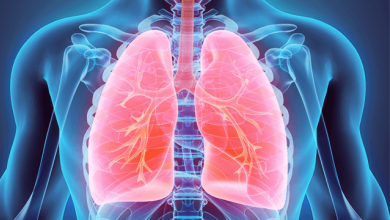Search results
Author(s):
Hossein-Ardeschir Ghofrani
,
Ralph Schermuly
,
Norbert Weissmann
,
et al
Added:
3 years ago
Pulmonary arterial hypertension (PAH) has an estimated prevalence of 15–25 cases/million population.1 This chronic, progressive disease is defined by a mean pulmonary arterial pressure >25mmHg in conjunction with normal pulmonary capillary wedge pressure <15mmHg.2 The disease is characterized by increased vascular resistance of the pulmonary microvasculature, ultimately resulting in right…
View more
Author(s):
Nazzareno Galiè
Added:
3 years ago
The field of pulmonary arterial hypertension (PAH) has recently been characterised by rapid improvements in therapeutic options and corresponding improvements in patient outcomes. In 1991, estimates from the US Department of Health and Human Services National Institutes of Health (NIH) Registry painted a grim portrait of survival in patients with pulmonary hypertension – then called primary…
View more
Author(s):
Madelon C Vonk
Added:
3 years ago
Pulmonary arterial hypertension (PAH) is a common and fatal complication of connective tissue diseases (CTDs). By expert consensus, PAH is diagnosed when at right heart catheterisation a mean pulmonary arterial pressure (PAP) >25mmHg at rest or >30mmHg during exercise is measured, together with a normal wedge pressure and a normal or reduced cardiac output.1 The exact pathophysiological…
View more
Author(s):
Carmine Dario Vizza
,
Roberto Badagliacca
,
Roberto Poscia
,
et al
Added:
3 years ago
Abstract
Pulmonary arterial hypertension (PAH) is a serious and life-threatening condition for which the prognosis remains poor. Treatment options include endothelial receptor antagonists, phosphodiesterase (PDE5) inhibitors and prostanoids. Despite all demonstrating good short-term efficacy, none of the currently available drug therapies are curative. Treatment with prostanoids is complex and…
View more
Author(s):
Athanasios Charalampopoulos
,
J Simon R Gibbs
Added:
3 years ago
Abstract
Pulmonary hypertension is a relatively common finding in patients with left heart disease and lung hypoxic disease. Nonetheless, some types of pulmonary hypertension, such as pulmonary arterial hypertension and chronic thromboembolic pulmonary hypertension, are rare. Despite the rarity of these diseases their impact on patients' lives and healthcare system is significant because of…
View more
Author(s):
Nazzareno Galiè
Added:
3 years ago
The field of pulmonary arterial hypertension (PAH) has recently been characterised by rapid improvements in therapeutic options and corresponding improvements in patient outcomes. In 1991, estimates from the US Department of Health and Human Services National Institutes of Health (NIH) Registry painted a grim portrait of survival in patients with pulmonary hypertension - then called primary…
View more
Pulmonary Hypertension
Author(s):
Brendan P Madden
Added:
3 years ago
Article
Author(s):
Robert P Frantz
Added:
3 years ago
Pulmonary arterial hypertension (PAH) is a rare but life-threatening condition that has traditionally required treatment with continuous intravenous epoprostenol via an indwelling central catheter.1–3 Such therapy improves outcome, but is fraught with side effects, expense, and risk of catheter-related complications. Therapy of PAH has evolved tremendously in recent years, reflecting the…
View more
Author(s):
Peter Kabunga
,
John G Coghlan
Added:
3 years ago
Pulmonary arterial hypertension (PAH) is a devastating disease that without specific therapy is characterised by a progressive increase in pulmonary vascular resistance (PVR), leading to right ventricular failure and ultimately death. Among the conditions associated with PAH, connective tissue disease-associated PAH (CTD-PAH) is linked with the gravest prognosis (one-year survival of 50%) without…
View more
Author(s):
Robert Voswinckel
,
Ralph T Schermuly
,
Norbert Weissmann
,
et al
Added:
3 years ago
Pulmonary arterial hypertension (PAH) is a chronic, progressive disease defined by increasing pulmonary vascular resistance and pulmonary arterial pressure, ultimately leading to right heart failure. The life expectancy of patients with PAH who do not receive appropriate treatment is dramatically reduced. Guidelines for the diagnosis and treatment of PAH have been established by the American…
View more











